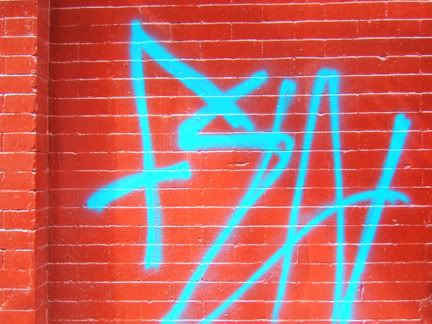
...And then there was Jane. New Yorker's conduit de jour to talk about their general freak-out at the progressive gentrification/ homogenization/ corporatization of their nabes is none other than Jane Jacobs, that champion of neighborhoods feeling like, well, neighborhoods. (Her classic book, The Death and Life of Great American Cities (1961) outlines her ideas much more eloquently.)
First, the Jane Jacobs show evaluating New York City nabes based on her criteria opened at the Municipal Art Society of New York. Bay Ridge, Brooklyn and Astoria, Queens come out looking pretty good, curator Christopher Klemek told the New York Observer. A Time Out cover story, Has Manhattan Lost It’s Soul? (Sept. 20-26) followed en suite, using a Jacobs-inspired rubric to rate Manhattan neighborhoods. Alphabet City topped their list. And this weekend (Sept. 29-30), the Center for the Living City is leading ambitious free "Jane's Walk New York" tours through a dozen or so neighborhoods including the South Bronx, the Atlantic Yards, Manhattanville, the UWS, and more. (There are more walking tours and a series of panel discussions scheduled through November in conjunction with the MAS exhibit.)
While I love the celebration of the many varied identities of the many varied New York neighborhoods—and the excuse for us to get out of our own neighborhood bubble—I can't let go of the suspicion that these sinking ship declarations are New York snobbery in disguise, aka "New York pride." They're another way of declaring "New York is nothing like it was back ..." or "I remember when..." Statements that essentially are stated to remind you, the recipient, that the speaker remembers the good/old New York because they were here then. ...And all that's left today is crumbs.
New York was, is, and always will be — different. But it will always be New York. And I can only think that when people lament the New York that was, they're missing something about the New York that is. I'm not championing the opening of another megachainstore in your neighborhood, or the closure of a nabe institution because of rent disputes. All I'm saying is that if that's all you see then you're not looking close enough. And as for gentrification? It happens. I like what Jan Lee, a furniture designer and Chinatown store owner, tells TONY in the same cover story (Chinatown ranked #2): "Chinatown hasn't resisted gentrification. Chinatown was gentrified 100 years ago by the Chinese. I know—my grandfather was one of the people who participated. There's a Chinese bank on every corner. There's a multimillion-dollar gold and diamond business. But because it's been done by an ethnic group, it's not considered gentrified."



